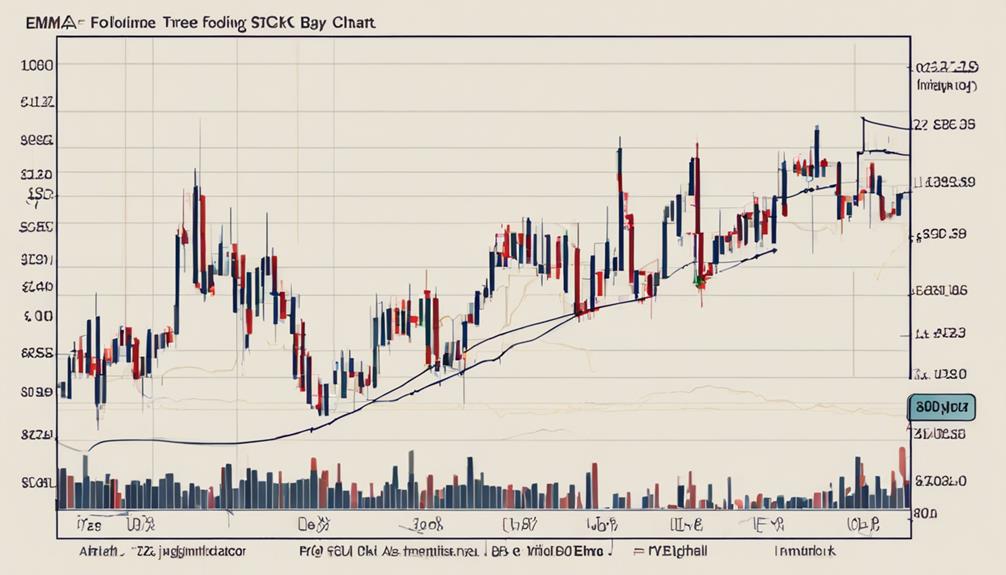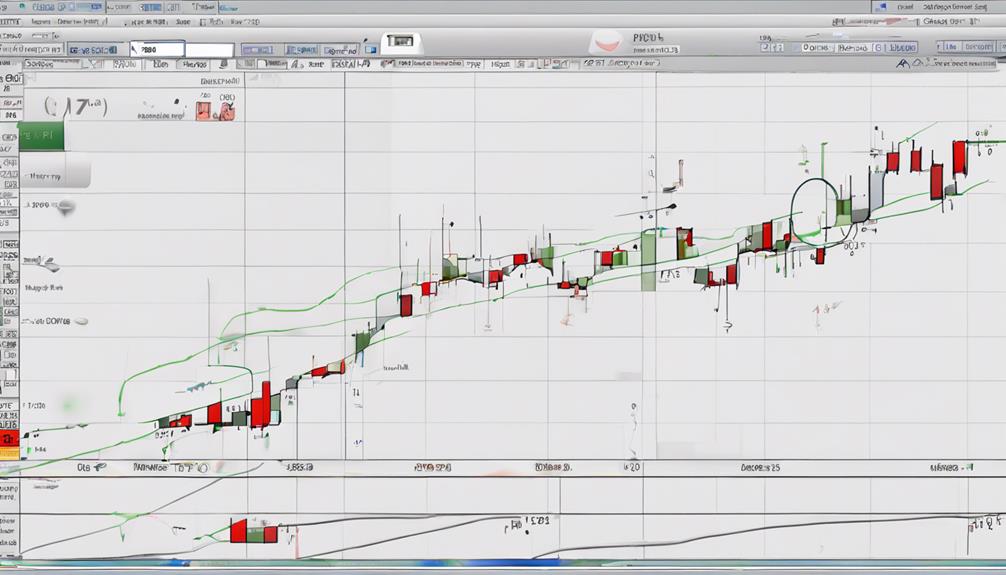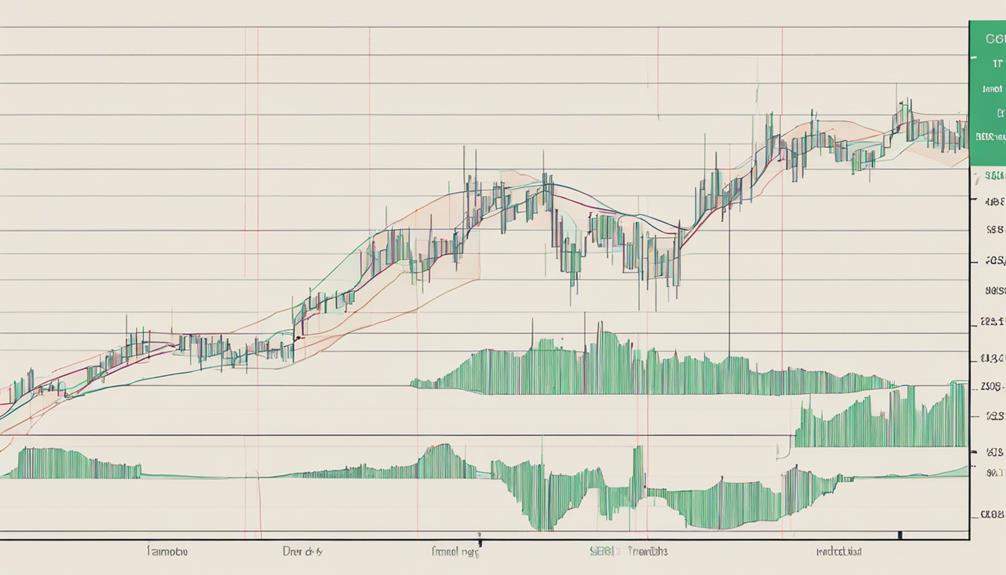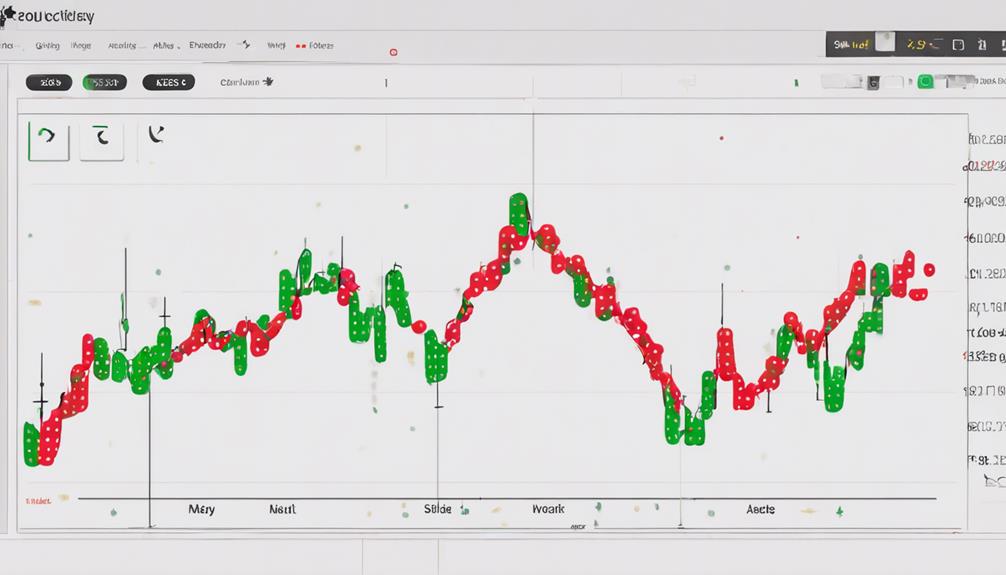As you dip your toes into the vast ocean of trend following indicators, navigating through the waves of Simple Moving Average (SMA) and Exponential Moving Average (EMA), you begin to grasp the essence of trend analysis.
But wait, there's more to uncover beyond these basic tools. Exploring the realms of Average Directional Index (ADX), Moving Average Convergence-Divergence (MACD), and Parabolic Stop and Reverse (Parabolic SAR) could provide you with a deeper insight into the world of trend following indicators.
Simple Moving Average (SMA)
When using trend-following indicators, implementing the Simple Moving Average (SMA) can enhance your analysis by calculating the average price of a security over a specified number of periods. Traders rely on SMAs to gauge the direction of a trend and its strength. By smoothing out price fluctuations, SMAs help in identifying potential trend reversals or continuations.
Commonly used periods for SMAs are 50-day, 100-day, and 200-day, each offering different insights into the market. SMA crossovers, where shorter-period SMAs cross above or below longer-period SMAs, are often used as signals for entry or exit points. While effective in trending markets, SMAs may provide less valuable information in sideways markets with minimal price movement.
Incorporating SMAs into your trading strategy can provide valuable insights for informed decision-making.
Exponential Moving Average (EMA)

The Exponential Moving Average (EMA) assigns greater importance to recent price data, offering quicker responses to price changes compared to the Simple Moving Average (SMA). Traders commonly utilize 20-day, 50-day, and 200-day EMAs for trend analysis due to their ability to capture price movements swiftly.
Average Directional Index (ADX/DMS)

To comprehend market trend strength objectively, traders often turn to the Average Directional Index (ADX/DMS) as it employs moving averages to produce three distinct lines. Here are three key points about ADX/DMS:
- +DMI above -DMI indicates strength in an uptrend, and vice versa in a downtrend.
- ADX values at or below 25 suggest weak trends or rangebound markets.
- Traders use ADX to assess trend quality and strength objectively, enhancing trend-following strategies when combined with other indicators.
Moving Average Convergence-Divergence (MACD)

Gerald Appel introduced the Moving Average Convergence-Divergence (MACD) in the 1960s to analyze the relationship between different moving averages. The MACD indicator comprises the MACD line, signal line, histogram, and zero line, offering insights into market momentum.
Traders analyze crossovers and divergences in the MACD lines to identify potential trading signals. The histogram within the MACD illustrates the gap between the MACD line and the signal line, aiding in assessing trend strength.
Typically, a MACD line above zero signals a bullish market sentiment, while a line below zero indicates bearish conditions. Understanding these components of the MACD can assist traders in gauging market trends effectively.
Parabolic Stop and Reverse (Parabolic SAR)

Introduced as a trailing stop and reverse indicator, the Parabolic SAR assists traders in identifying trend direction through strategically placed dots above or below price levels.
Here are three key points about the Parabolic SAR:
- The dots of Parabolic SAR switch sides when the trend reverses, aiding in determining entry and exit points.
- This indicator is beneficial for setting trailing stops in strong trending markets, enhancing risk management strategies.
- While Parabolic SAR is reliable in strong trending markets, it can produce false signals in choppy or rangebound conditions. Traders often combine it with other indicators for confirmation and improved trading accuracy.
What Are the Most Commonly Used Trend Following Indicators for Beginners?
For beginners, the basic trend following indicators are essential for analyzing market trends. Some of the most commonly used indicators include moving averages, relative strength index (RSI), and MACD (moving average convergence divergence). These indicators help identify potential entry and exit points for trades, making them valuable tools for novice traders.
Frequently Asked Questions
What Are the Basics of Trend Following?
To follow trends effectively, you need to identify market direction and capitalize on price movements. Using indicators confirms trends, requiring discipline and patience to ride them out. Success in trend following can yield substantial profits.
How Do You Identify a Trend With an Indicator?
When identifying a trend with an indicator, you assess the line's position, confirm it with other lines, watch for crossovers, and gauge its slope. These steps help you follow market trends effectively and make informed decisions.
What Are the 4 Types of Indicators?
To identify trends effectively, utilize moving averages for direction, oscillators like RSI for overbought/oversold signals, momentum indicators such as MACD for trend strength, and volatility indicators like Bollinger Bands for price fluctuation insights.
What Is the Best Indicator for Trend Trading?
When trend trading, the best indicator for you depends on your strategy and preferences. Moving Averages, RSI, ADX, MACD, and Bollinger Bands are popular choices. Combining indicators can improve signal accuracy and confirmation for successful trend trading.
Conclusion
In conclusion, mastering these trend-following indicators is essential for successful trading. By incorporating SMA, EMA, ADX, MACD, and Parabolic SAR into your strategy, you can confidently navigate the ever-changing market trends.
Remember, 'don't put all your eggs in one basket' – diversify your indicators to maximize your chances of identifying profitable trends and avoiding false signals.
Keep analyzing, keep refining, and keep following the trends to stay ahead of the game.


